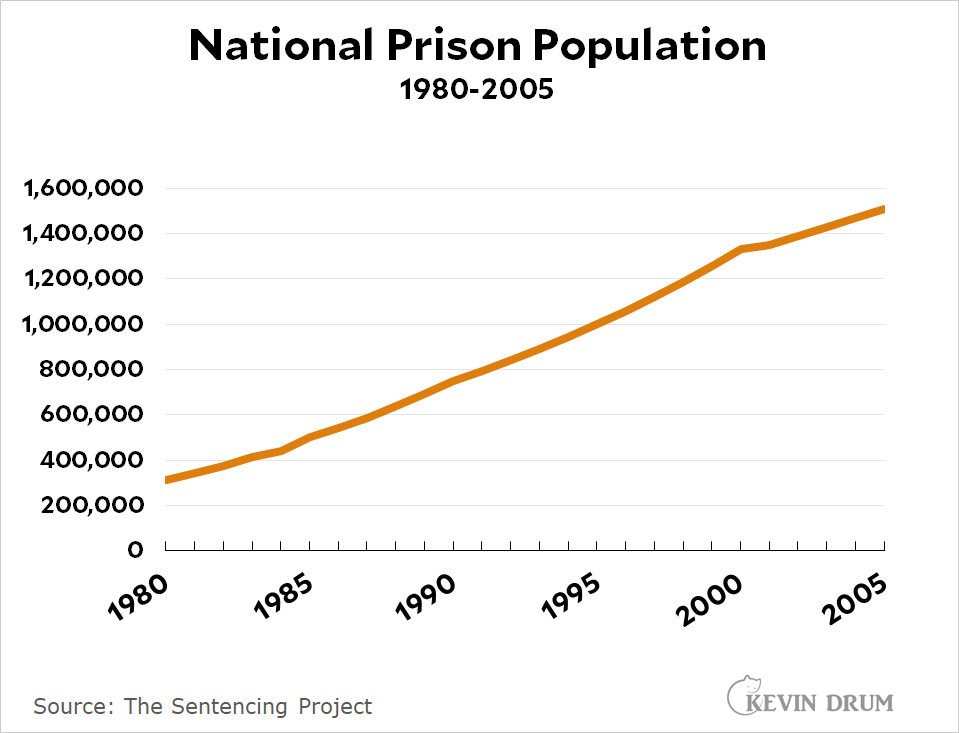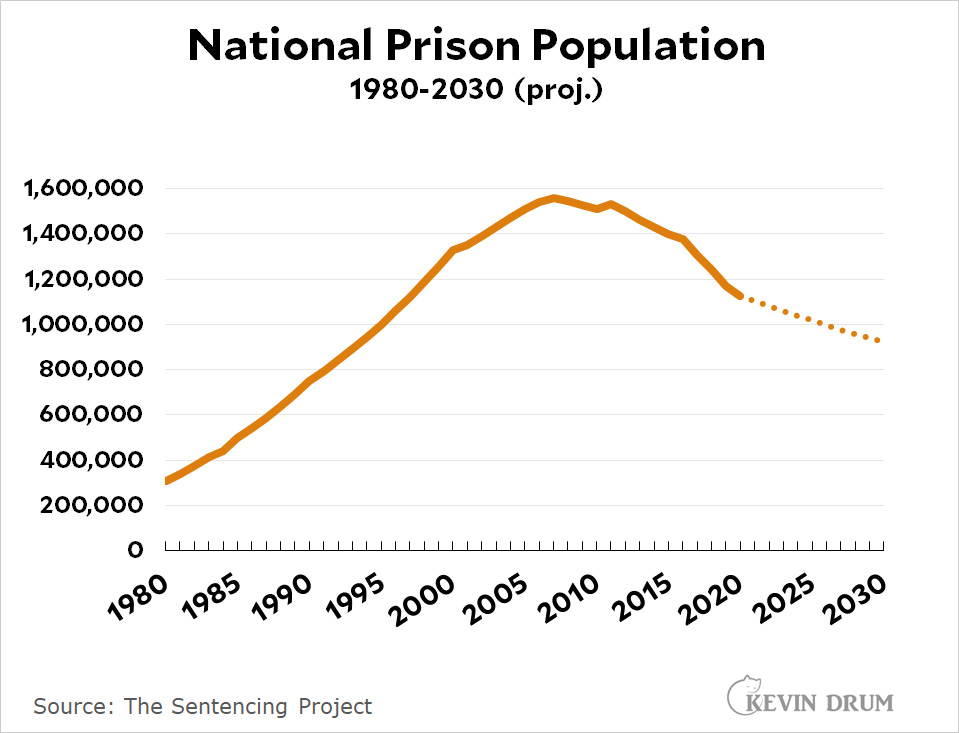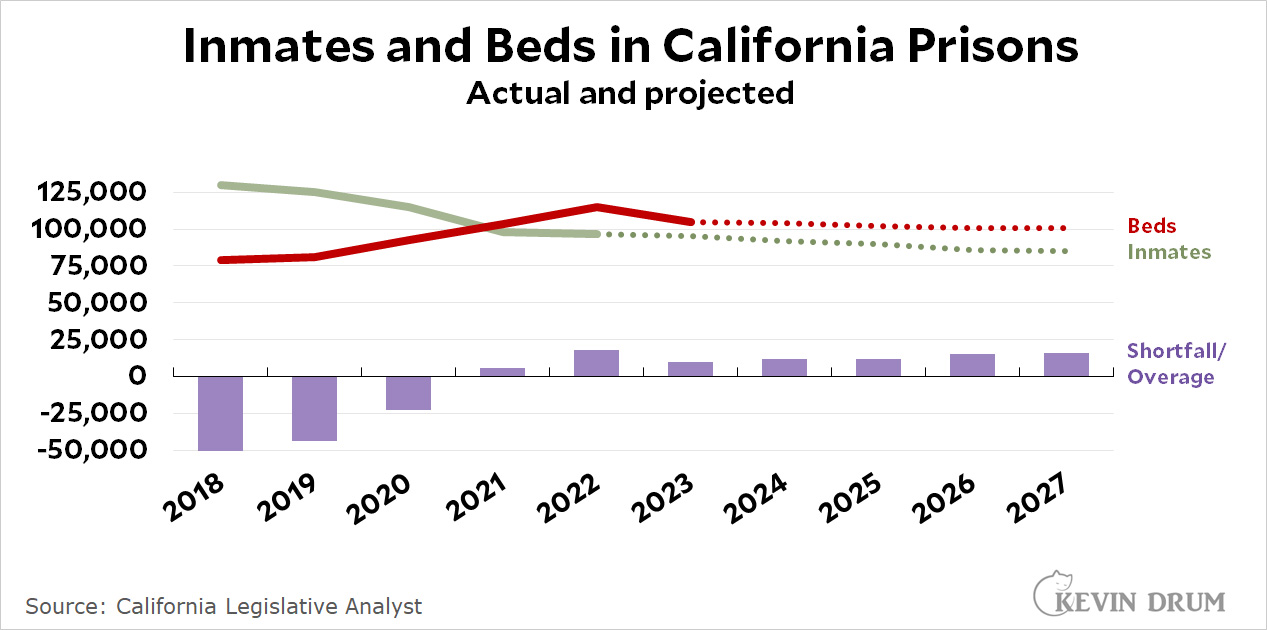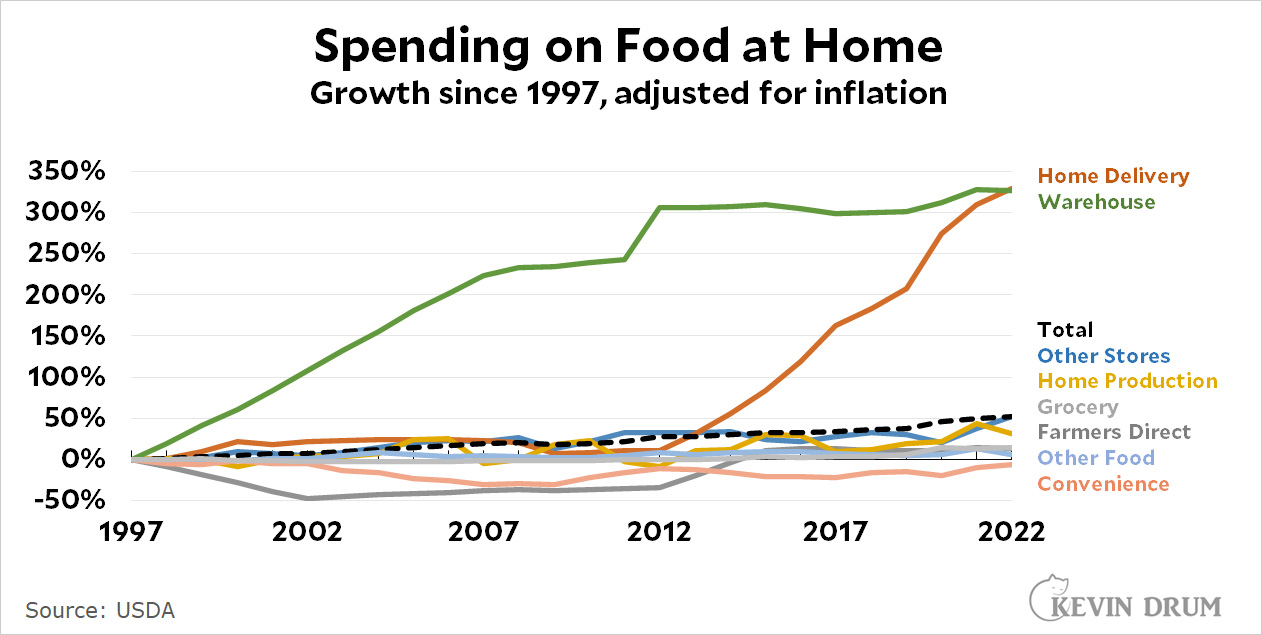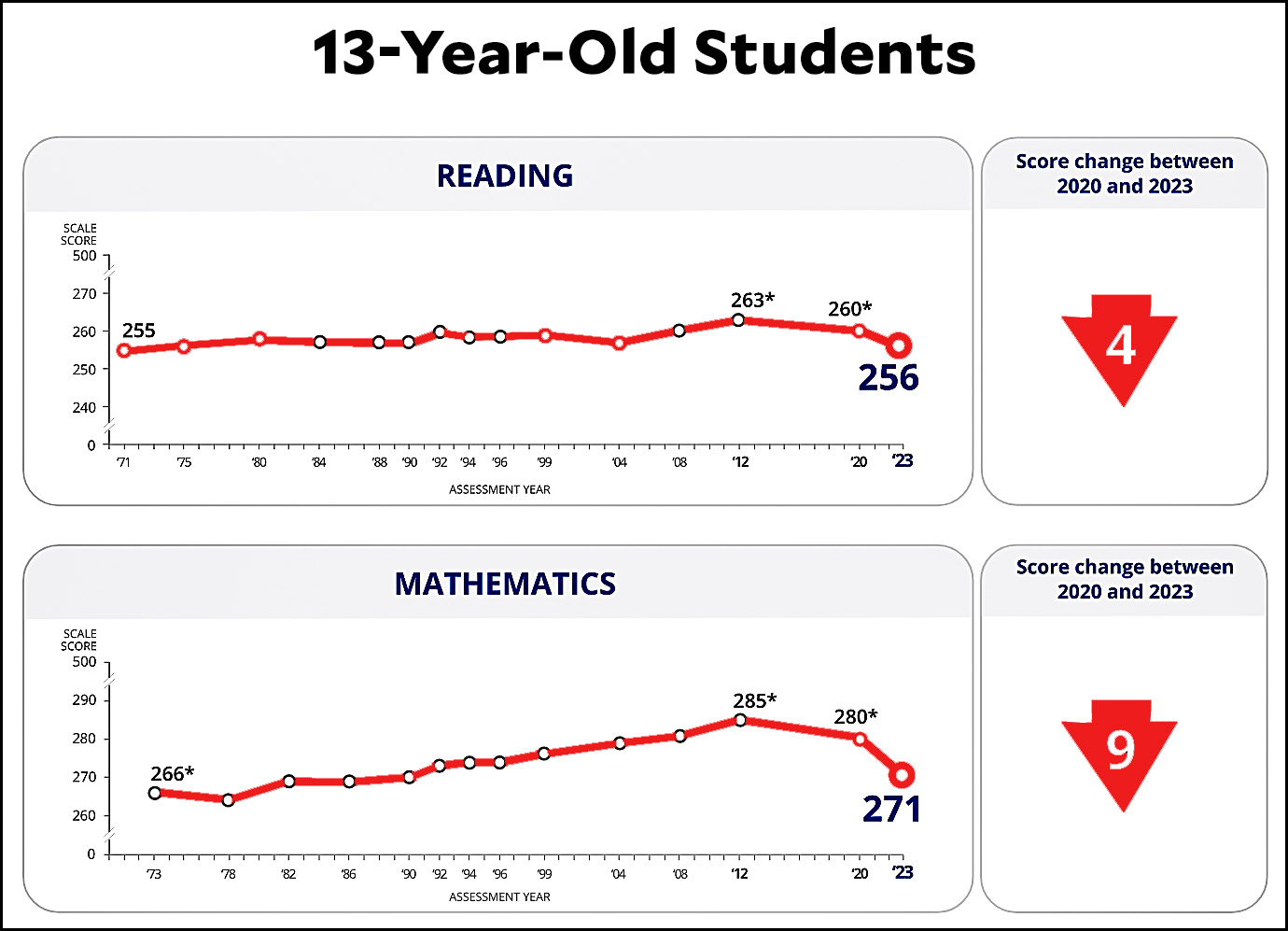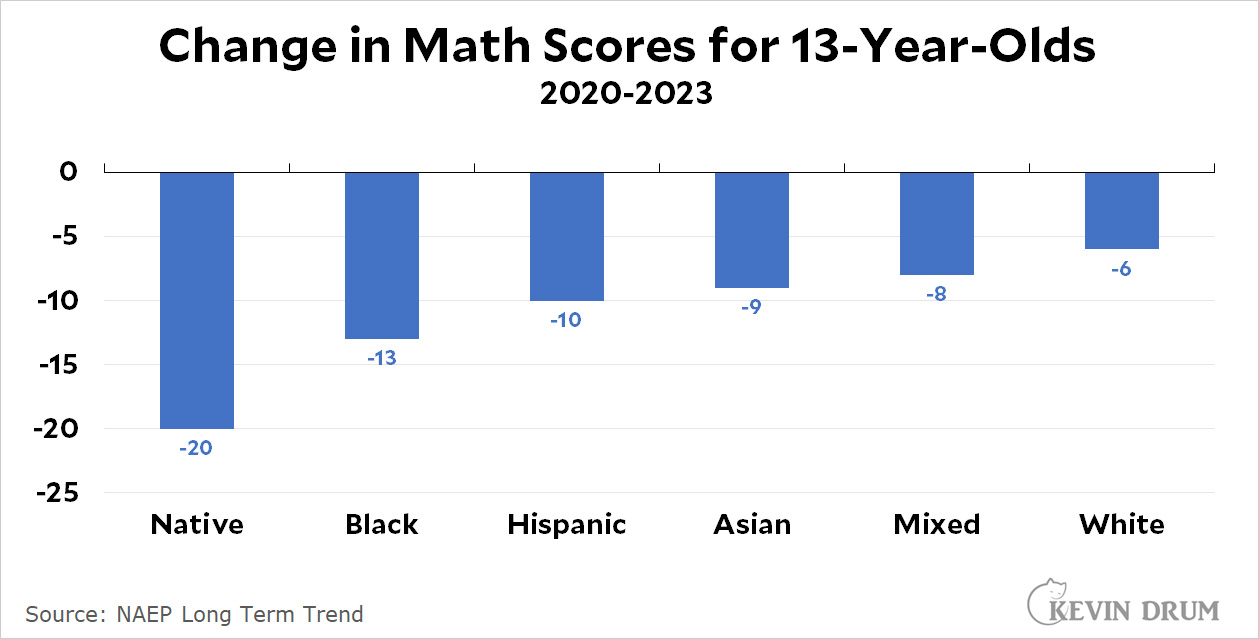I'm not going to say that the Supreme Court has been Joe Biden's biggest friend lately, but they've been surprisingly sympathetic toward him in several recent medium-button cases. They voted in favor of him yesterday in the Navajo water case, a few days ago in the Alabama redistricting case, and last month in the Section 230 case.¹ Today it's immigration:
The U.S. Supreme Court on Friday ruled for the Biden administration in an important immigration case, saying Texas and Louisiana lacked the legal standing to challenge the executive branch’s priorities on who should be deported.
At issue is a....focus on arresting recent border crossers and immigrants who pose a threat to public safety, rather than the millions of other noncitizens who have lived here for years.
....Friday’s decision was 8-1, with Justice Samuel A. Alito Jr. the lone dissenter. “The States have brought an extraordinarily unusual lawsuit,” Justice Brett M. Kavanaugh wrote for the majority. “They want a federal court to order the Executive Branch to alter its arrest policies so as to make more arrests. Federal courts have not traditionally entertained that kind of lawsuit; indeed, the States cite no precedent for a lawsuit like this.”
Various administrations have argued that immigration law is broadly written to give the executive wide powers, and among those powers is one that gives them control over prosecutorial discretion—that is, which immigrants to arrest and which not to. Conservatives have hit back, arguing that prosecutorial discretion is one thing on a case-by-case basis, but not when it's applied automatically to vast groups of people, as it has been in DACA to provide blanket protection for nearly a million undocumented teenagers.
Today's ruling is based on standing, not on the merits, so it's not strong and it could eventually return to the Court for another go-around. All told, though, DACA is now a decade old and has withstood a deluge of challenges. It's starting to seem pretty safe.
The vote was 8-1, and naturally Sam Alito was the lone holdout. He's a hack's hack.
¹They've also voted against him in the wetlands case, the NLRB case, and are likely to vote against him in the Harvard affirmative action case shortly. So it's not a big ol' bowl of cherries out there.

